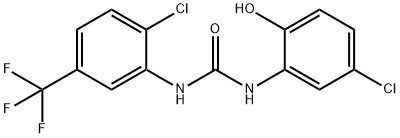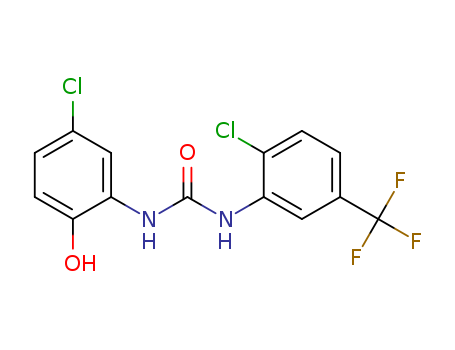501684-93-1

501684-93-1 性质
| 沸点 | 344.1±42.0 °C(Predicted) |
|---|---|
| 密度 | 1.617±0.06 g/cm3(Predicted) |
| 储存条件 | Store at RT |
| 溶解度 | 可溶于DMSO(少许)、甲醇(少许) |
| 形态 | 白色结晶固体 |
| 酸度系数(pKa) | 8.08±0.13(Predicted) |
| 颜色 | 灰白色至浅灰色 |
501684-93-1 用途与合成方法
EC50: 3.4 μM (α7 nAChR, in oocyte experiments)
NS 1738 acts by increasing the peak amplitude of acetylcholine (ACh)-evoked currents at all concentrations; thus, it increased the maximal efficacy of ACh. Plotting peak current amplitude against the logarithm of the NS 1738 concentration used for preincubation reveals a sigmoidal concentration-response relationship that is well fit by the Hill equation (EC 50 =3.4 μM). Under similar experimental conditions, NS 1738 shows comparable efficacy and potency at the rat α7 nAChR (EC 50 =3.9 μM).
To estimate the ability of NS 1738 to permeate the blood-brain barrier, rats are administered 10 mg/kg NS 1738 intraperitoneally. Peak brain concentrations are measured approximately 30 min after injection, and they amount to ~80 ng/mL (~200 nM) at this dose. The ratio between the amount of compound entering the brain and that in plasma is AUC brain /AUC plasma =0.50. The half-life in plasma is estimated to 42 min. Incubation of NS1738 with isolated liver microsomes in vitro indicates that approximately 60 and 75% of NS 1738 is metabolized via the cytochrome P450 system in mouse and rat, respectively, within 1 h. Adult rats administered NS 1738 at 10 and 30 mg/kg i.p. immediately following the initial exposure to a juvenile rat (T1) display significant decreases in the investigative duration of a subsequent exposure to the same juvenile (T2) 2 h later (T2/T1 ratio of 0.69±0.13 and 0.61±0.07, respectively).
501684-93-1 价格(试剂级)
| 更新日期 | 产品编号 | 产品名称 | CAS号 | 包装 | 价格 |
|---|---|---|---|---|---|
| 2025-02-08 | HY-12151 | 501684-93-1 | 501684-93-1 | 5mg | 680 |
| 2025-02-08 | HY-12151 | 501684-93-1 | 501684-93-1 | 10mM * 1mLin DMSO | 748 |


